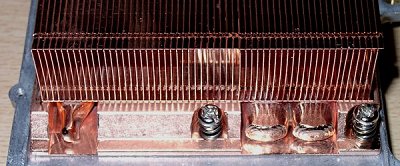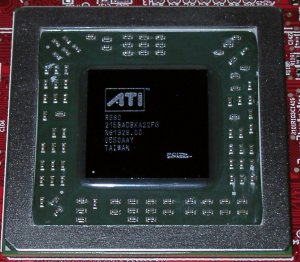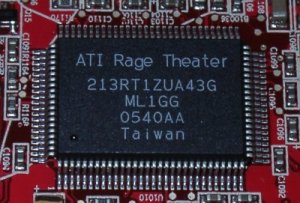SAPPHIRE Radeon X1900 XTX 512MB
SAPPHIRE Radeon X1900 XT 512MB PCIe
The current ATI Radeon X1900 range is spearheaded by the XTX version. It differs from the regular XT by specifying faster core and memory clocks of 648MHz and 1,548MHz, respectively, up from the XT's 621/1448 clocking. With the initial batch of X1900-based cards, there's no further differentiation than a boost in clocks. Lending further credence this fact is XT cards have the same device ID as XTXs, so Windows XP, for example, sees both variants as one and the same.
This is why, for all intents and purposes, SAPPHIRE's Radeon X1900 XTX 512MB card looks the same as its XT model. Identical PCB, GPU, and DRAM devices confirm that the XTX is nothing more than a speed bump, an Ultra model, if you will.

Is this a picture of a Radeon X1800 XT, X1900 XT or X1900 XTX? Betting ends!

Removing the cooler's cover highlights the engineering behind one side of the base. The block of copper has a couple of heatpipes that ferry the GPU's heat around the entire base, and the folded-fin design, brazed to the base, creates a decent amount of surface area from which cooling takes place.

R580 is architecturally similar to the outgoing R520 SKU, except for a massive boost in pixel-shading power. R520 supports 16 efficient pixel shaders: R580 triples that to 48, making it, on paper, a monster performer with titles that use copious amounts of pixel shader for ultra-realistic effects, so just as it's now rather foolish to surmise CPU performance from pure clock speed alone, pure MHz are only one determinant of potential processing ability.

ATI's Rage Theater ASIC provide this (and the other boards') basic VIVO functionality. As with the other two boards, the SAPPHIRE X1900 XTX can support 2 Dell/Apple 30-inch panels concurrently.

The little green sticker is the only visible indication that this is an XTX model. SAPPHIRE's ATI Radeon X1900 XTX card costs around £60 more than its XT model, which amounts to an asking price premium of around 15%. Core clocks are around 9% faster whilst memory speeds are 7.5% higher. Should you wish to run an XTX in CrossFire mode, which it fully supports, ATI's initial master-card release is limited to X1900 XT speeds, so the the extra X in the card's name accounts for nothing in a multi-GPU setup.
The accompanying bundle is identical to the SAPPHIRE X1900 XT's, so please click back a page to remind yourself of just what's included.









